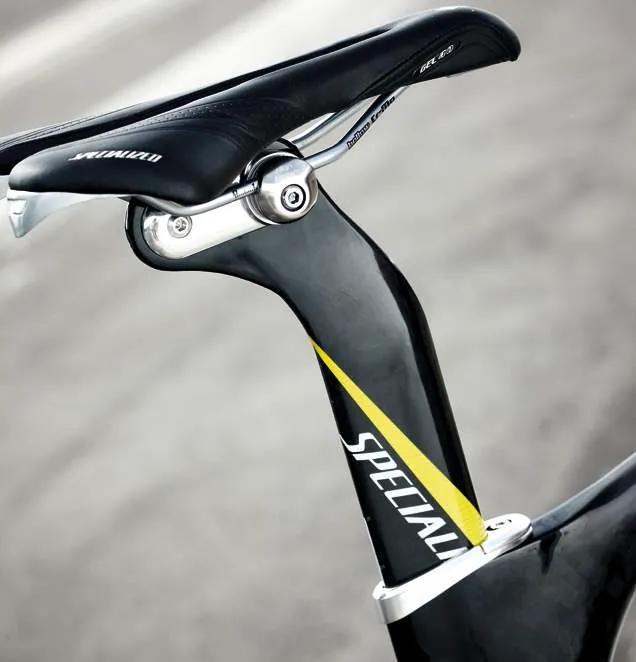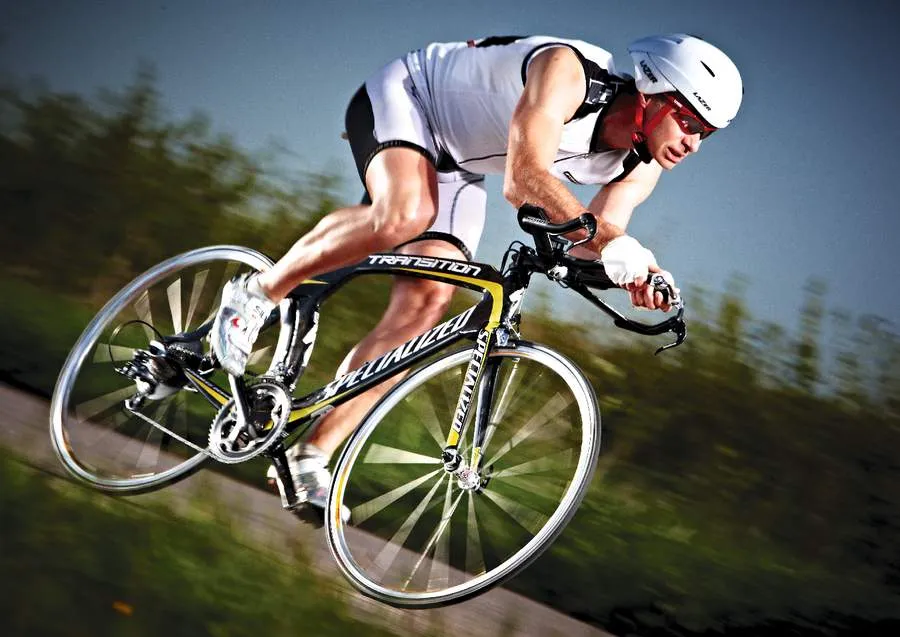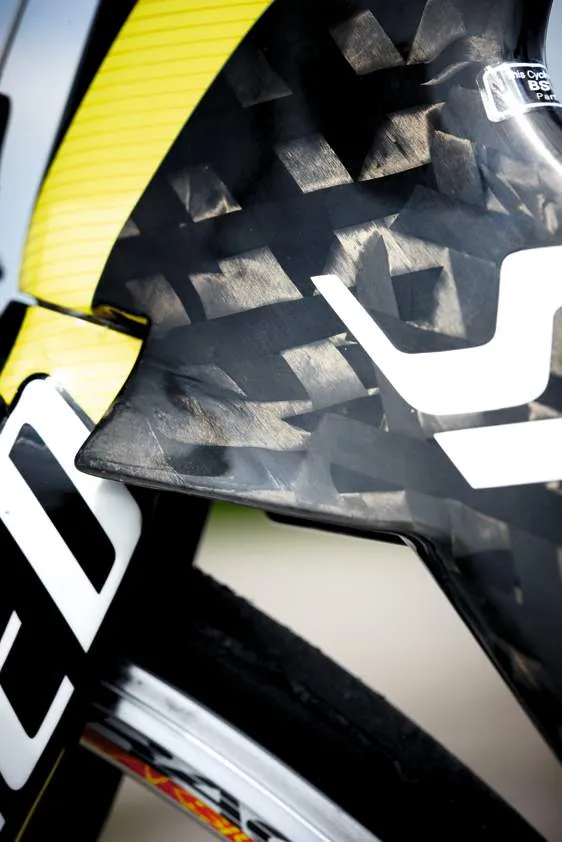The Specialized Transition has been replaced at the top level by the controversial Shiv concept bike, and the Comp uses a less exotic carbon blend than the top-end S-Works bikes. Its fit versatility and slick detailing may outweigh its less responsive character for long-distance cruisers, though.
Ride & handling: Sluggish at low speeds, but has noticeable aero benefits over 20mph
While the wheels are light (1,260g/1,714g) and overall weight isn’t too bad (9,117g), the feel of the Transition is sluggish and inert. It needs a bit of grunt to get moving in every gear and it’s definitely a grinder rather than a goer when trying to keep a gear going to the last gasp.
Drivetrain stiffness is only adequate rather than encouraging too, so while it gets up to speed eventually there’s never a feeling of whipcrack acceleration to boost your morale. This sluggishness outweighs any drag advantage up to at least 20mph too, so you’ll need a decent engine to get you to speeds where you’ll appreciate the aero detailing.
It’s no fan of hills either and you’ll need to keep knees clear of the gear cables behind the head tube to stop accidental nudge shifting. When you’re chucking it round tighter corners or flicking through potholes at slower ‘urban’ speeds you can also feel rotational flex and tracking inaccuracy from the thin forks and head tube.
The centrepull brakes, ‘scorpion sting’ levers and the convoluted cable routing that connect them give a soft, low-power stopping feel too. This all adds up to a bike that isn’t going to inspire or enthuse riders looking for that instant edge for short course or hilly racing.
Where it does stand out is its very easy handling balance. While the forks aren’t particularly accurate, the front end is very smooth over rattly stuff and stays rock steady at speed, encouraging aero novices to stay in a tuck far longer than normal.
Once you’ve got it over the 20mph hump, aerodynamics and stability start to mesh, and through 25 to 30mph you’ll hit the Transition’s happy hunting ground. Any upturn in the road will soon leave you grovelling, so it’s best seen as a powerful flatlander’s solo weapon.

Frame & equipment: Advanced but heavy chassis; weak brakes and convoluted cable routing
You’re certainly getting an advanced aero frame on the Transition, but that’s not necessarily a good thing for all-round appeal. It was one of the first bikes to revert to a narrower, more aerodynamic 1in headset, and the humped top tube also steps down to reduce head tube height.
The down tube/fork leg gap is bridged by two small fins designed to smooth airflow. Gear and rear brake cables plug into the nape of the top tube behind the stem, and then pop out just where they’re needed. It’s a very neat trick, but all the extra outer adds weight to a heavy frame.
While the callipers for the centrepull brakes are possibly more aero than standard brakes, the need for a cable hanger under the stem adds a centimetre of stack height to the front end. The brake can actually snap the tips off the carbon down tube fins too if you let it flop back far enough when carrying or loading the bike into a car.
The rear wheel tucks right into a curved cutout, while the centrepull rear brake sits below the chainstays in the already ‘dirty’ air behind the cranks and bulbous bottom bracket block. The deep seatstay complex at the top swallows a vertically inserted aero seatpost with a neat (but heavy) expander wedge clamping device.
The seatpost also gets a reversible chuck for the saddle clamp so you can run a super-steep run- friendly seat angle, or a more relaxed one. Some riders will have to cut the post down in length to get a decent fit though.
Super-deep wheel contouring chainstays smuggle the gear cabling internally along the driveside. Flared ‘wrists’ then kick the close-fitting seatstays out over the cassette block like a fairing.
The Transition gets reliable Shimano 105 but shifting quality suffers noticeably from the convoluted cable routing. We’ve already grumbled about the brakes, but the tyres feel wooden over rougher surfaces, which all undermines the fine feel.
The Mavic wheels are relatively light and the fixed one-piece cockpit also helps drop overall weight. You can’t rotate the flat extensions without moving the wing round too, which is irritating on a very adjustable bike.





